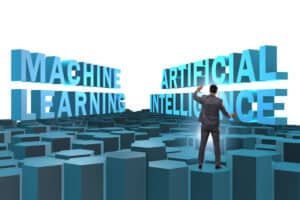
Companies need to weigh the potential benefits against the costs to ensure GenAI adoption brings real and measurable value in the long run.
The digital world is in the throes of a GenAI revolution, a trend where large language models (LLMs) like ChatGPT are fundamentally reshaping how we interact with and extract knowledge from data. This evolution has transcended the “cool tech” headlines and is now democratizing data accessibility and empowering everyone, from seasoned data scientists to general business users, to extract, comprehend, and derive succinct insights from vast amounts of data.
According to Gartner, Inc., the use of generative artificial intelligence (GenAI) APIs or models, as well as the implementation of GenAI-driven applications in operational settings, is projected to surge to over 80% among enterprises by 2026, a significant leap from the mere 5% recorded in 2023.
GenAI: A Part of our Everyday Life
Artificial Intelligence is not new to us. We interact with and benefit from AI and GenAI every day, sometimes even without our knowledge. Retail giants like Amazon have deployed GenAI to highlight product features and customer sentiment frequently mentioned in written reviews to help customers determine whether a product is right for them at a glance. Volkswagen is bringing ChatGPT into its cars so that drivers can listen to researched content out loud through the in-vehicle voice assistant.
From a technical perspective, the most celebrated use of this technology is its aid in the busy and sometimes boring tasks of creating presentations, writing blogs, summarizing information from a multitude of files, writing code, creating social media posts, drafting product descriptions, ad copy, essays, and—more recently—creating image and video assets for digital use.
Those without extensive technical expertise can think of GenAI as an uber-talented personal assistant adept in a wide range of tasks. You can task it with summarizing an article, writing the first draft of your emails, creating graphs and charts, and even creating images and videos based on brief text-based inputs.
On the enterprise side, LLMs have thrown open an array of new possibilities when it comes to comprehending both structured and unstructured data, thus unlocking insights that were once restricted to those who could understand their complexity.
With GenAI, a marketing manager with no coding skills today can simply ask, “Show me the most engaging social media posts for our competitor’s campaign,” and the LLM will effortlessly surface the relevant insights. Structured data, with its organized format, has long been the cornerstone of analytics. However, the rise of unstructured data—texts, images, videos—presents a new era. AI’s ability to sift through this data mess, extracting meaningful information, is a game-changer.
See also: 10 Executives on Why and How GenAI is Here to Stay
Data: The Lifeblood of GenAI
No matter how exciting the technology is, it is reliant on a robust foundation of data. Without clean and readily available information, even the most sophisticated LLMs sputter—necessitating an emphasis on data hygiene and a data strategy that aligns with business goals—ensuring AI models are fed the right information for the right problems. As organizations embrace this paradigm shift, the synergy between data, analytics, and GenAI will be pivotal in unlocking unprecedented growth opportunities across diverse sectors.
The GenAI Journey
Embracing GenAI is a journey that every organization is starting from a different place. In an ideal world, your data will be complete, accurate, fresh, and readily available. If your organization is already there, kudos! The next step is to identify a function like sales operations, marketing, or HR to test for proof-of-concept.
If the more likely scenario is true and your data is not ready, it can be helpful to narrow the scope and start with a smaller proof-of-concept. Maybe pilot a tool for HR employee relations or marketing in owned and operated channels. Keeping the technology in-house is a relatively low-risk way to work out the kinks.
In either case, set quantifiable goals like productivity improvements, amount of re-work, number of edits, time to respond, etc. as parameters to measure the ROI.
According to McKinsey, although we are still in the early days of this technology, GenAI usI is already widespread. This wave of adoption will only get stronger as the interaction between humans, data sets, and technology evolves, transcending text and speech.
The cost of deploying GenAI, however, should be evaluated. The tech is expensive, and ROI is not guaranteed. For LLMs to generate meaningful and relevant content, requires training the models on vast amounts of data. Model training demands processing power in terms of the number of intelligence processing units (IPUs) and graphical processing units (GPUs), which can get expensive quickly.
While techniques to lessen costs, like deploying custom smaller models or using the newer LLMs, like Nvidia’s Tensor RT LLM, are emerging, organizations need to carefully weigh the benefits of deploying the technology against its investment.
See also: Smart Talk Episode 2: The Rise of GenAI Applications with Data-in-Motion
Strategy-led Tech Adoption
GenAI is exciting and it is no surprise that companies are eager to invest in it. However, in this race to dive headfirst into GenAI, it will be the companies that strategically integrate this technology within their current organizational goals that gain the most. A strategy-led tech adoption ensures that the investment in genAI is justified by the value it adds.
Simply put, companies need to weigh the potential benefits against the costs and ensure that GenAI adoption brings real and measurable value in the long run.




























